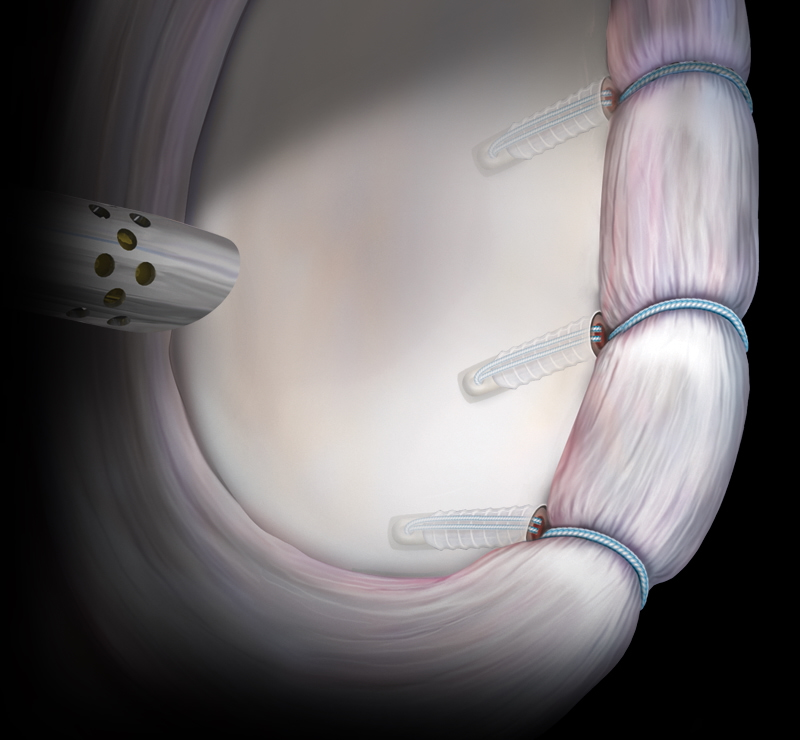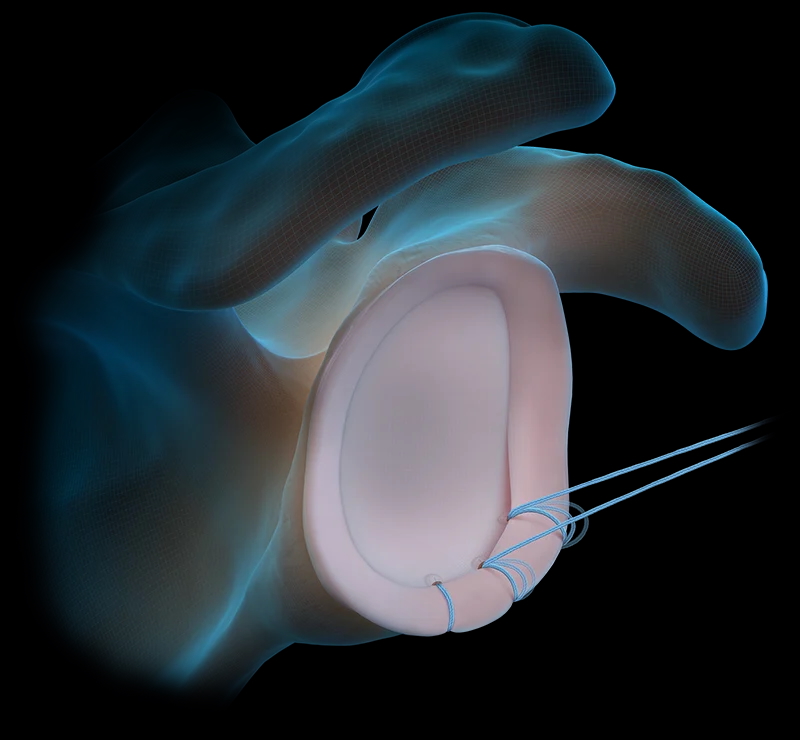Indications for surgery
Arthroscopic Shoulder Stabilisation is typically recommended for those who experience multiple shoulder dislocations or instability and have not responded well to physiotherapy. Candidates for this surgery usually have:
- Good bone structure in the shoulder joint (without significant bone loss)
- Labral tears or joint capsule stretching caused by previous dislocations
- Persistent instability that affects daily activities, work, or sports
Surgery is considered after a first time dislocation in a small group of patients with a very high risk of further instability. These are typically patients under the age of 25 years who partake in contact and overhead sports. In most other cases a course of treatment in a sling followed by physiotherapy will be the first course of action. Read more about shoulder instability below:
What the surgery involves
This procedure is performed as keyhole surgery, also known as arthroscopic labral repair.
Here’s what happens during the operation:
- Small incisions are made to insert an arthroscope (camera) and specialised surgical instruments.
- The surgeon visualises the labral tear and any other damage on a monitor using the arthroscope.
- The torn labrum is reattached to the bone using small anchors with sutures.
- Stretched ligaments and tissues are tightened to restore joint stability.
- A remplissage procedure may also be performed to fill a divot in the back part of the humeral head if indicated.
- The incisions are closed with sutures or surgical tape, and a waterproof dressing is applied.

What to expect after surgery
After Arthroscopic Shoulder Stabilisation, recovery is a gradual process. Medications are prescribed to manage discomfort, and you will need to wear a sling for 4–6 weeks to protect the repair. Early movement exercises also start soon after surgery to maintain mobility and prevent stiffness. Read more about the rehabilitation protocol below:
How long will you be in hospital?
This procedure is done as same-day surgery, meaning you can go home the same day, provided there are no complications.
Usual recovery times
- First 6 Weeks: The shoulder is immobilised in a sling, but light movement exercises are introduced.
- 6–12 Weeks: Physiotherapy focuses on improving range of motion and strength.
- 3–6 Months: You may return to low-impact activities and light work duties.
- 6–12 Months: Full recovery, including returning to sports or heavy physical activity, may take up to a year, depending on the extent of the repair and adherence to the rehabilitation program.
Potential risks
- A small risk exists for infection at the incision site or within the joint
- Surgery can lead to shoulder stiffness or reduced range of motion
- Rarely, nerves controlling the shoulder muscles may be injured, causing weakness or numbness
- Re-dislocation or instability may occur if the repair does not hold
- Though rare, clots can form in the arm or shoulder region post-surgery
- Internal scarring may affect joint movement and healing
- Persistent discomfort may develop in some cases despite surgical intervention
Is Arthroscopic Shoulder Stabilisation right for you?
All surgery is a personal choice and should be made at your own pace. Take the time to discuss your options with Dr Lambers, understand the risks and benefits, and ensure you’re comfortable. There’s no rush to decide.

